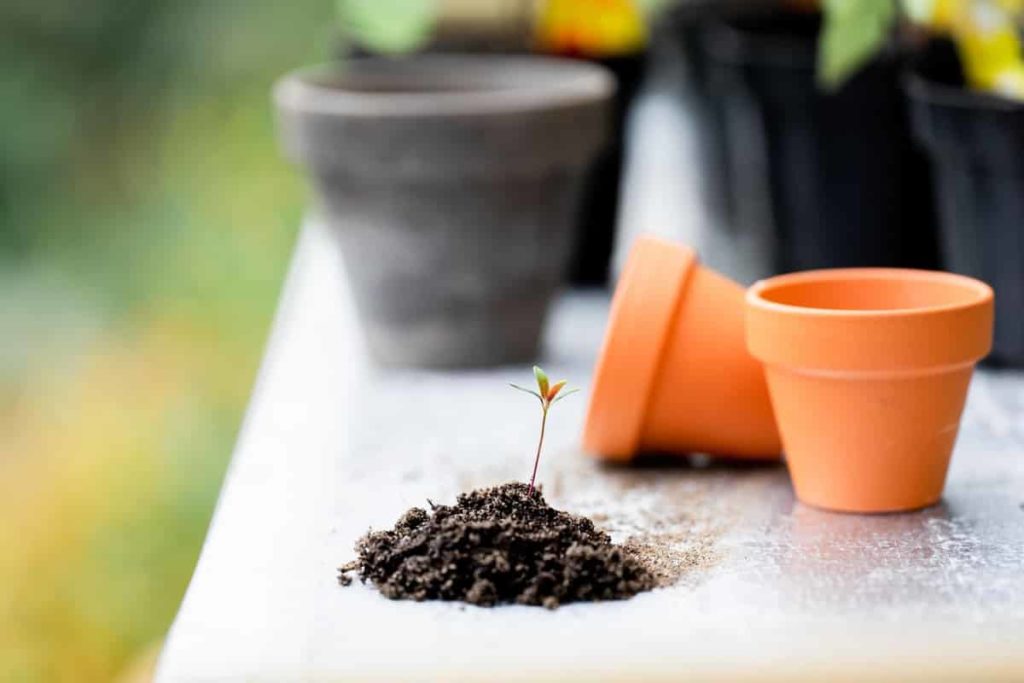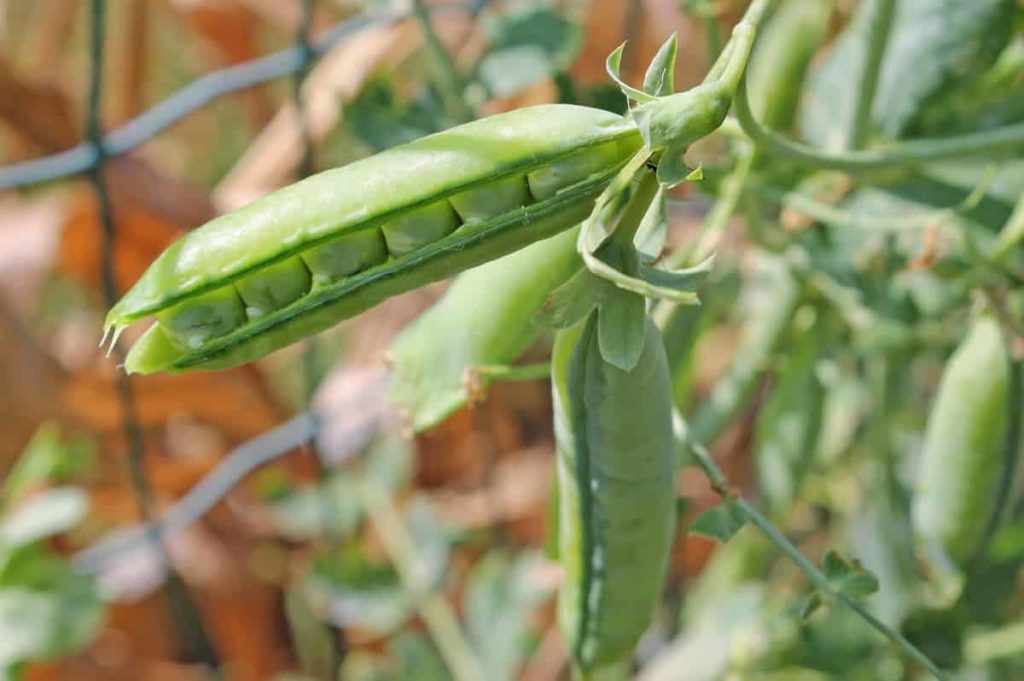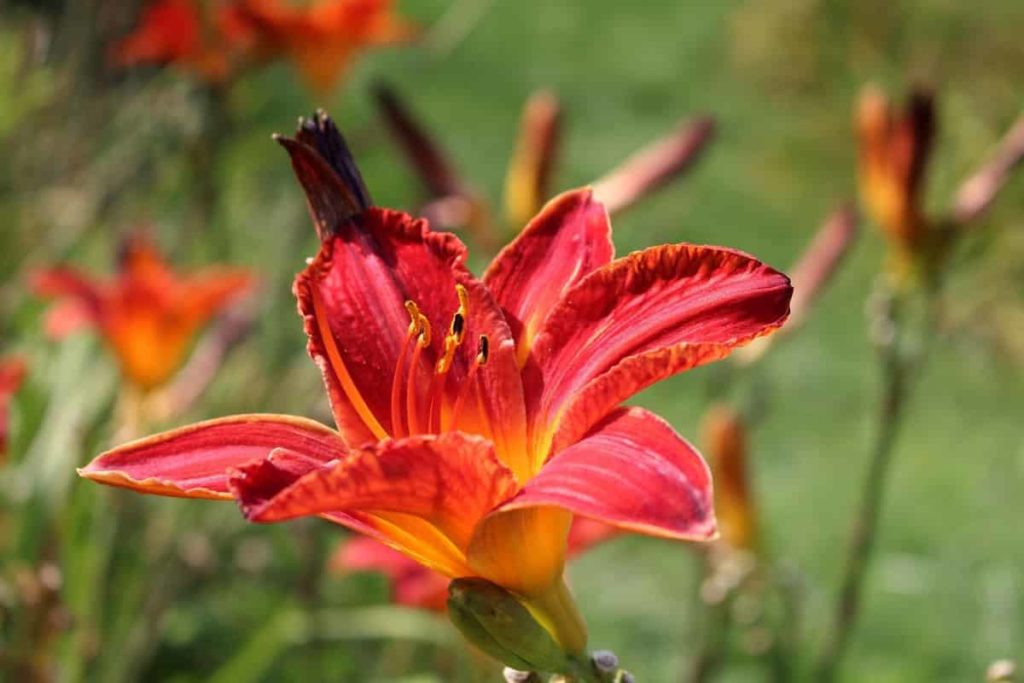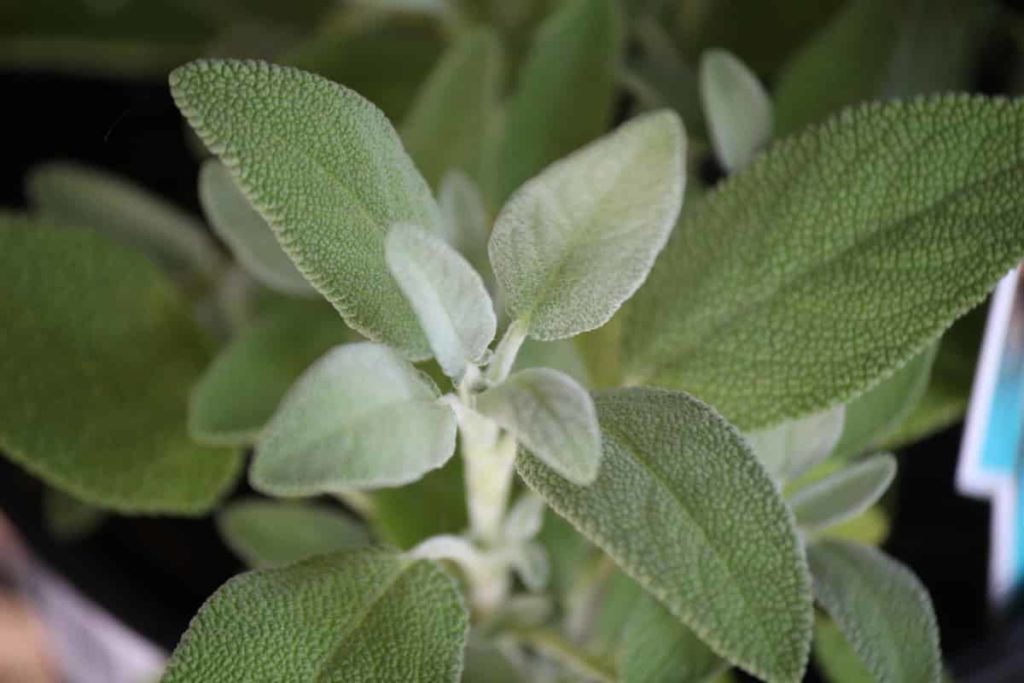Consider growing your garden in containers this year, especially if you don’t have a lot of room on your land for a garden, if the soil on your property isn’t very good, or if there isn’t much sunshine. If you reside in the Ohio Valley, the problems you’re having with your garden could be solved by growing plants in containers. Let’s check out more information about Ohio container gardening.

Growing plants in containers is an excellent option for gardeners who are restricted in the amount of land area available, who relocate often, or whose physical mobility prevents them from working at ground level. A vegetable garden inside containers offers additional benefits, including increased resistance to disease, pests, and raiding animals. However, in contrast to traditional gardens, gardens in containers need more regular watering.
Containers may restrict the amount of your garden’s harvest, but in general, growing in containers is a realistic alternative for gardeners interested in experimenting with new techniques. How to grow plants in containers, container gardening for beginners, and the greatest home garden plants in Ohio for veggies, fruits, flowers, and herbs can all be found here.
In addition to discussing which plants grow well in containers, this page discusses which fruits and vegetables perform well. Many cities in Ohio, including Columbus, Cleveland, Cincinnati, Akron, and Dayton, have emerged as focus points for container gardening. And we believe that this article will be helpful to individuals who are interested in container gardening in Ohio.
What is container gardening?
Container gardening can be defined as growing plants in containers such as pots, planters, tubs, half barrels, old cowboy boots, or any other object capable of holding potting soil and a plant. It refers to raising a plant in a setting that is not a conventional garden plot dug into the earth. This is why beginning gardeners will find success with container gardening. There is no need for a garden plot, and even a small amount of land can accommodate the growth of a single tomato plant or a few different types of herbs.
USDA hardiness zones of Ohio
Most of Ohio has what is referred to be a humid continental climate. There is a humid subtropical climate in the southern part of the state. From arid to subtropical, the state’s planting zones experience various climates. There is more snow in the northern portions of the state, with an average temperature of 29 degrees, than in the southern half, which tends to be warmer.
Severe weather is typical along the southeast side of Lake Erie, with lake effect snow being the norm. Summertime temperatures in the state are generally about 70 degrees Fahrenheit. However, this varies significantly from region to area. While temperatures in the western half of the state rarely get beyond the mid-80s, in the northeast, they do. In general, the state’s summers are hot and humid. However, precipitation is mild on an annual average.
Zones 5b and 6b are the only two growth regions in Ohio. Gardeners use growing zones, also known as planting zones, to choose which flowers, plants, and vegetables to plant. In addition, their zone determines plants’ winter hardiness. On the other hand, planting zones do more than only direct our planting choices. Furthermore, they can assist in determining when to plant. All planting zones in the United States are based on the first and final frost dates.
They are choosing plants rated for the Ohio planting zone where you want to grow your garden is essential. If you’re planting in zone 5b, for instance, be sure you choose plants that are classified for zones 1 through 5. Anything graded for a higher zone increases the danger of losing plants in the wintertime.
Vegetables, plants, and flowers thrive in Ohio’s fertile soil. The hardiness zone map can help you choose plants that will survive and flourish in your region. Wild geraniums, trout lilies, black-eyed Susans, butterfly weed, white trillium, and goldenrod are just a few natural alternatives. In addition, the Ohio growth zones are excellent for beets, cabbage, cauliflower, onions, carrots, parsley, and parsnips.
Ohio container gardening: Step by step guide
Select the ideal container for your plants
Container gardening requires using the right container, which is not a surprise. This is because the health of your container garden can be made or broken depending on the container you choose. A number of variables must be considered while selecting the right container for your garden. The first thing to consider is the size of the container about the quantity of space you have available for your container garden.
You must consider the kinds of plants you wish to grow in your container garden. Selecting the right container size is essential since different plants need space to thrive. Last but not least, your containers must be long-lasting and resistant to damage caused by extreme weather. To avoid the worry of your gardening being harmed by bad weather, it is essential to invest in high-quality containers early on.
Take care of drainage
Overwatering your plants, on the other hand, is a possibility. To avoid harming your plants, allow any extra water to drain out of the pot. Several options are available to do this. First, cut tiny holes in the container’s base to allow water to drain. You can also buy containers with drainage holes of the correct size.
Use quality potting soil for your plants
It is essential to use potting soil of a high grade for growing plants. Do not put soil from your yard in the containers, as this will cause the soil to get compacted and prevent water from draining correctly. Additionally, gardening in containers allows one to avoid the hassle of dealing with weeds and diseases that are transmitted via the soil. However, if you utilise soil from your garden, you risk bringing issues into your containers.
In case you missed it: New Jersey Container Gardening: How to Start with Vegetables, Fruits, Herbs, and Flowers

Plant your container plants
Seeds vs seedlings
According to most people, planting your container garden is the shortest step of the procedure. You’ll need to have your pots ready, potting soil, fertiliser, and seeds or seedlings to begin planting. When growing lettuce, cucumbers, or radishes directly from seed, it is essential to pay close attention to and carefully follow any directions that are included on the seed packets. On the back of the seed packet, you’ll find directions that tell you how deep to plant the seeds, how many seeds to use, and how far apart your seeds should be spaced.
Before purchasing any further plants from the nursery, inspect each one and check its health. Keep an eye out for signs of fading leaves. Next, take a peek at the little nursery container’s soil and roots. It’s ideal if the soil is wet and the roots are well-developed and white. Finally, you’ll want to gently remove the roots of your seedlings from the nursery before putting them in your container garden. This will aid in spreading the roots and the plant’s ability to be transplanted.
Propagation from seeds
Check the seed packaging, which should indicate when to start the seeds. Beans and squash, for example, are best grown outside. As they germinate and develop so fast, there is no use in growing them inside. Poppies, for example, perform best when planted outside. Seeds labelled “direct sow” are often available. To germinate, seeds need warm soil. Excessively cool soils have a decreased germination rate or none. At 78°F, most seeds will germinate.
Soil temperature is maintained by waterproof heating mats made particularly for seed germination. Many nurseries and garden stores sell them. Alternatively, set seed trays on a warm surface until the seeds sprout. Immediately after germination, the surrounding air temperature should be maintained at or below 70°F. Seedlings can endure temperatures as low as 50 degrees Fahrenheit so long as the soil temperature remains between 65 and 70 degrees Fahrenheit.
Propagation from cuttings
Because plants have the greatest moisture in the early morning, this is the optimal time to take cuttings. First, choose a healthy portion of 3 to 6-inch length growth. Next, make a clean cut using a razor blade. If the stem is crushed or torn, it will be more difficult for the shoot to grow new roots. Finally, place the cut ends of your cuttings in water or keep them in a plastic bag with a wet towel wrapped over them until you’re ready to pot them up.
Get rid of the bottom half of a shoot’s leaves so you can plant it in your potting soil. Rooting hormone can then be applied to the end of your stem. As a general rule, cuttings root faster when they’re kept moist. So make a moist potting mix or perlite or vermiculite container for your cutting as soon as possible. Wrap your cutting in transparent plastic to keep it from drying out. Some plants have delicate stems and can be started in a glass or jar of water with ease.
Fertiliser requirements for your container plants
Your potting soil won’t be enough to feed your plants; you’ll need fertiliser to keep them well-fed and thrive all year long. But, even if there is no shortage of traditional fertilisers, it is believed that one of the most beneficial aspects of growing your food is the degree of control you have over the kind of chemicals that come into contact with the food you produce.
When it comes to selecting a fertiliser, it is recommended that you seek an organic alternative at your neighbourhood nursery that you are certain will be good not just for your plants but also for your body. There are many different kinds of fertiliser, but generally speaking, it is best to use a slow-release organic fertiliser and mix it with your potting soil according to the guidelines provided on the fertiliser packaging.
After the plants have been established, fertilise them about once every two weeks to ensure that they are well supplied and develop healthily throughout the growing season.
Provide enough sunlight and temperature for your container plants
Most fruiting plants, such as tomatoes and peppers, need to be exposed to 6 hours of direct sunlight daily. However, some gardeners may overestimate the amount of sunlight a region receives. Therefore, you’ll need a thorough evaluation of your plants to ensure their long-term viability. In addition, you should examine the sun’s position in the sky at least once every 30 minutes during the day to determine when the sun will be directly overhead when you want to plant your container garden.
Additionally, a solar calculator can get a more exact estimate. Plants may need to be shaded in the afternoon if you live in a hot region to avoid overheating. Your plant’s roots might be overcooked if you utilise metal or dark-coloured pots. On the other hand, many crops dislike soil that is too cold. As a result, if you reside in a cold region, wait to leave your containers outdoors until the weather is consistently warm before doing so.
Many plants need soil temperatures of at least 60 degrees Fahrenheit to grow properly. It is possible to measure the temperature of your soil using a thermometer. In addition, before allowing your seedlings to remain outdoors permanently, be careful to harden them off.
Water your container plants
Container gardens need constant watering, particularly in the summer heat. Keeping your soil wet is critical since the containers are above ground, especially because of the lack of direct soil contact. You’ll know that your plants need watering when the earth starts to peel away from the pot’s sides. If you overwater your plants, the roots of your plants will be smothered, and they will die, so make sure your pots have drainage holes.
Pushing your forefinger into the soil while watering your plants is a general guideline. The soil must be moist before checking; if the soil is wet, you have overwatered it, and you need to water your potting mix if you feel it is dry. When you learn how much water your plants require, you won’t have to water them every day anymore.
Growing vegetables in containers in Ohio
Potatoes: Potatoes grow nicely in containers in Ohio. Potatoes can be grown in containers with enough soil and water. In addition, containers can help avoid fungus, a major problem when growing potatoes.
Cucumbers: Cucumbers grow easily and quickly. Cucumbers are popular container veggies. Vining and bush cucumbers are popular. Vining cucumbers need a trellis. Bush cucumbers don’t need trellises. But their yield is lower.
Peas: Peas can be grown in containers multiple times a year. They improve the soil when grown in pots. After harvesting them, you can plant something else in their place, and it will grow more quickly.
In case you missed it: Growing Pigeon Peas In Container – Planting Guide

Onions: Onions and green onions are simple to grow in a container garden and can be used in many recipes. Neither green nor ordinary onions take much work or care to grow. This makes them a great container plant.
Eggplants: Eggplants might appear weird as a container veggie. These plants are simple to grow in pots and have several benefits. Eggplants need more room to develop, but they’re worth it. Eggplants can be grown in pots in Ohio with the proper space.
Growing fruits in containers in Ohio
Apples: You can grow apple trees in pots if you don’t have a lot of room. You can put them almost anyplace in your garden in Ohio, independent of the weather or soil conditions.
Cherries: It might take up to 4 years for some cherry trees to bear fruit, but in the meantime, you can admire their white or pink flowers. Cherry trees may need the use of netting to keep birds away. Picking cherries when completely ripe is optimal since they don’t keep ripening after being plucked. A potted version of this is also an option.
Strawberries: It is easy to grow strawberries in pots. As a result of their perennial nature, only one planting is needed. In addition, their roots will be kept from freezing if you bring them inside during the winter.
In case you missed it: Best Fertilizers for Strawberries: Homemade, Organic, Compost, Liquid, NPK Ratio, and Schedule

Blueberries: Blueberries in containers are different. A healthy yield requires at least two plants. They’ll produce throughout June-August. Blueberries require a 22-inch-diameter, 18-inch-deep container. Peat-based acidic soil is also needed.
Figs: Figs may seem an odd container plant, but they’re fantastic. They need a 16-inch-wide pot. They’re not picky about soil, just well-drained. They’re drought-tolerant and non-fussy, but they need full light. Container planting needs daily watering in the summer because water evaporates quicker.
Growing flowers in containers in Ohio
Daylilies: Daylilies are hardy blooming plants that like sun and shade. Each bloom lasts a day, although many bloom all summer. To keep plants looking fresh, remove dead flowers. Cut stems to the ground at the season’s end to save energy. Check for dead leaves or flowers while watering or strolling around your garden. Their leaves turn yellow in autumn and maybe pruned or raked in spring.
In case you missed it: New Jersey Container Gardening: How to Start with Vegetables, Fruits, Herbs, and Flowers

Poppies: For a splash of colour, plant poppies in your container garden. After the plant has been established, it should be watered less often to prevent unsightly overgrowth. Then, to keep the season fresh, remove the faded flowers.
Blue flag Iris: Bring violet flowers in late spring and early summer. Its leaves are sword-shaped and blue-green. These resilient plants love wet soil and grow near streams, wetlands, and wet meadows. This iris prefers full light but tolerates shade.
Allium: Purple spherical flowers, often called ornamental onions, grow tall in your container. The forecast has pink globes; Nodding Pink has drooping blooms. They like full light but can tolerate shade. Well-drained container soil prevents bulbs from decaying.
Yarrow: These are Early- to late-summer bloomers. The Coronation gold type of yarrow has small yellow flowers in bunches on grey-green stems. Yarrow grows slowly. Plants should be spaced 1-2 feet apart to allow for growth.
Growing herbs in containers in Ohio
Oregano: Oregano flavours Greek and Italian food. Sunlight makes this herb’s taste greater. Oregano in a garden only needs watering during dry weather. The plant is perennial.
Rosemary: Rosemary’s taste is unlike any other herb’s. Rosemary grows perennially in southern Ohio. In colder sections of the state, it should be brought indoors. In winter, you’ll have fresh rosemary. Rosemary enjoys the sun but hates being overwatered. Watering once every two weeks is plenty.
Basil: Basil isn’t a perennial, although indoor plants can endure a year or two. Basil likes the warm sun. It prefers damp soil. During warmer weather, water every day but don’t wet the soil. This herb grows quickly in the summer. Basil thrives in pots if you give it lots of room and maintain the soil well-drained.
Sage: Sage develops into a little shrub and flourishes for many years. Overwatering harms sage. New plants require weekly watering. Then once a week is enough.
In case you missed it: Growing Organic Sage – In Containers, And Pots

Tarragon: Unlike thyme and sage, tarragon’s delicate taste brightens French dishes. The plant does not need any kind of fertiliser and thrives in broad sun to mild shade. Tarragon needs well-drained soil and daily watering. In late autumn, the plant dies, and spring brings new growth.
- How to Grow Tomatoes Organically at Home: A Comprehensive Guide
- Organic Gardening on a Budget: Low-Cost Methods and Materials
- Gongura Seed Germination and Planting Methods
- Cabbage Seed Germination and Selection
- Broccoli Seed Germination and Selection
- Asparagus Seed Germination and Variety Selection
- Seasonal Flower Gardening: Best Practices for Spring, Summer, Fall, and Winter
- How to Grow Hibiscus from Flower
- Plantation Ideas for Home Decoration: A Beginners Guide
- Flower Garden Designs and Layouts for Beginners
- Planting and Spacing Techniques in Papaya: A Beginner’s Guide
- Growing Gold: Essential Techniques for Planting Pineapples
- How to Make Kalanchoe Plant Bushy: Home Remedies and Solutions
- 11 Reasons Why Your Gardenia is Not Blooming: Home Remedies and Solutions
- Eco Elegance: The Guide to Designing a Drought-Tolerant Landscape
- Gardening on a Slope: Strategies for Hillside Landscaping
- Nourish and Flourish: Top Organic Mulches for Thriving House Plants
- Everything You Want to Know about Indian Mogra Flower: Discover Uses and Growing
- Green Thumb Success: Expert Tips for Cultivating Greenhouse Pumpkins All Year Round
- Maximize Growth & Flavor: The Ultimate Guide to Companion Planting in Herb Gardens
- How to Control Rhododendron Problems Naturally: Home Remedies and Organic Ways to Fix Them
- Natural Magic: The Remarkable Benefits of Cinnamon for Plants
- Best Steps to Revive Dying Tulip with Natural and Organic Treatment
- 10 Reasons Why Your Angel Trumpet is Not Blooming: Remedies and Treatment
- How to Fix Periwinkle Leaf and Flower-Related Problems: Natural Remedies and Solutions
- How to Fix Zinnias Leaf and Flower Problems: Discover Natural and Home Remedies
- Organic Steps to Induce Lemon Tree Flowers: A Comprehensive Guide
- Bloom Booster: Crafting the Perfect Homemade Bougainvillea Fertilizer
- Optimizing Growth: A Guide to Applying NPK Fertilizer for Potted Plants
- 10 Best Homemade Fertilizers for Rubber Plant: DIY Recipes and Application Method
- How to Boost Female Pumpkin Flowers: Effective Steps for More Flowers and High Yields
- Transform Your Indoor Garden: Top Benefits of Pink Salt for Houseplants
- 10 Best Homemade Fertilizers for Peacock Plants (Calathea): Easy DIY Guide
- Unlock Blooms: 9 Reasons Why Your Potted Chrysanthemum is Not Blooming
- 8 Reasons Why Your Potted Hibiscus is Not Blooming: Fix it with Simple Solutions
- Unlock Blooms: 9 Key Reasons Your Potted Frangipani Won’t Flower